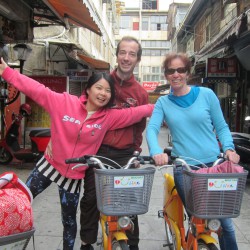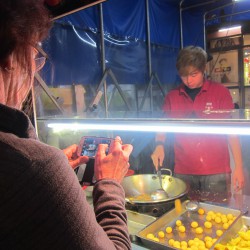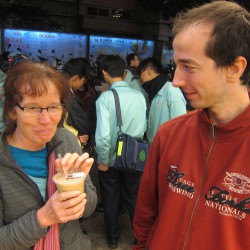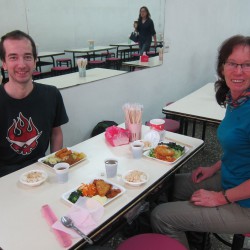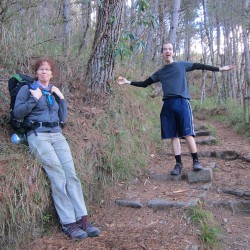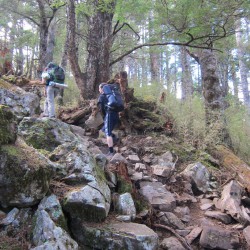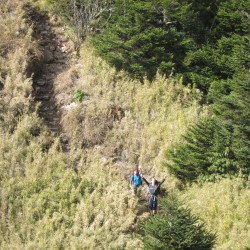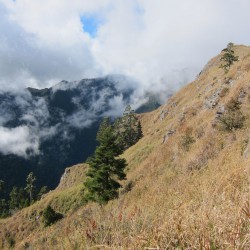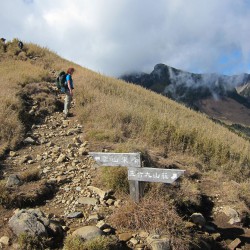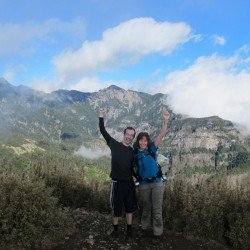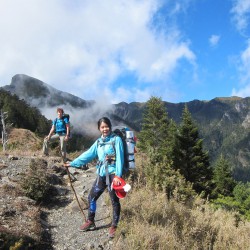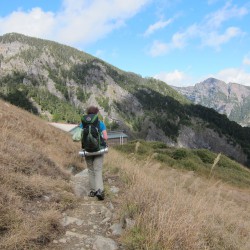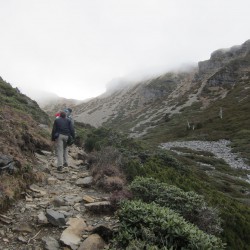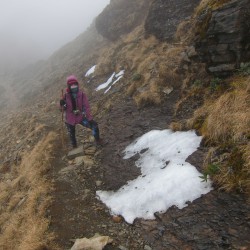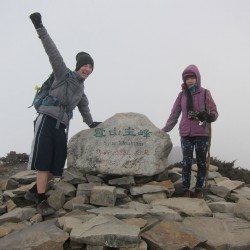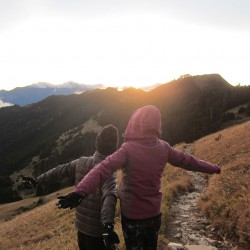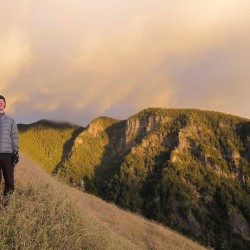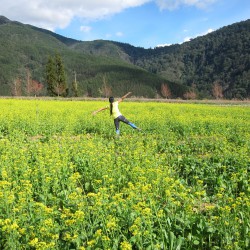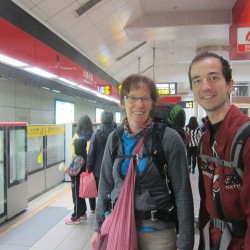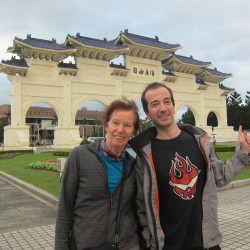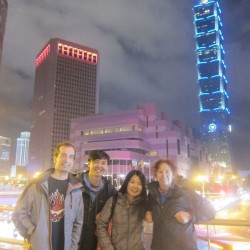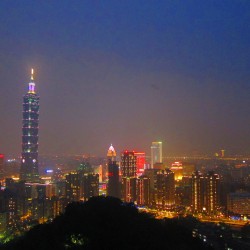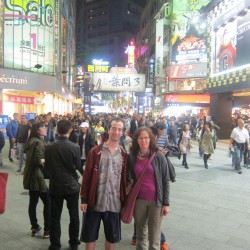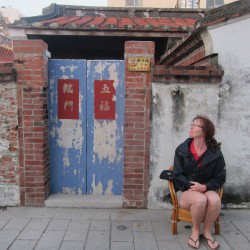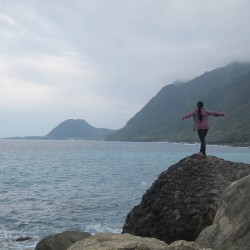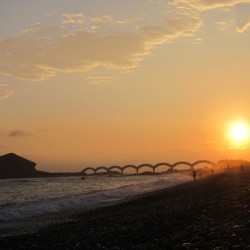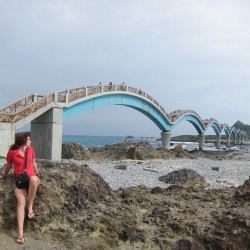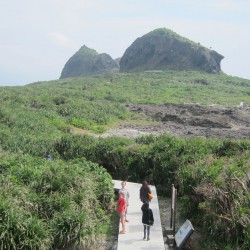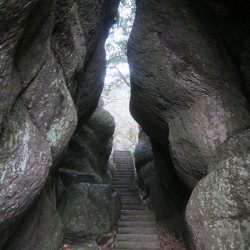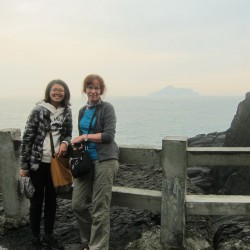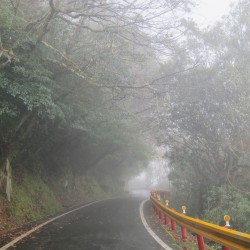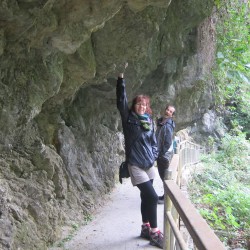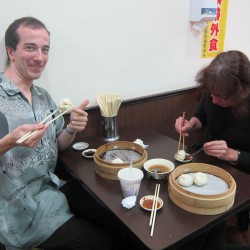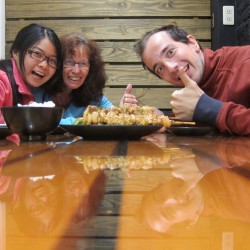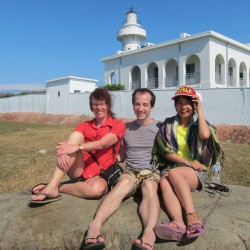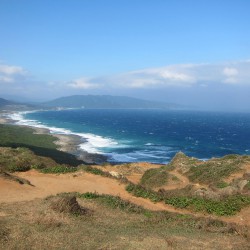When you look at Taiwan on a map, it seems like quite a small island. Only about 200 by 400 km in area, it’s smaller than states in many other countries. Is it possible to keep yourself entertained here for a year? Yes. Very much so.
I was really looking forward to the last weeks of my working holiday as I would stop working and my mother would come to visit us for two weeks at the end of December. At first she thought two weeks would be too long to travel around, but the more we planned our trip, the more it became evident that it’s simply not enough to see everything.
- Taichung
- Taichung – Yizhong Night Market
- Taichung – Bubble Tea
- Taichung – Lunch
While Taiwan is densely populated with 23 Million people, most live along the east coast between Taipei and Kaohsiung, which resembles one continuous city. The remaining 2/3 of the island are pure nature: Forest covered mountains reaching into alpine altitudes, dropping into the Pacific ocean in steep cliffs on the east coast. Nature lovers can enjoy Taiwan, as we did a 3 day hike up to its second highest mountain, Xueshan. The high altitude of 3886 m brought us to our limits, but the great scenery was unforgettable.
- Xueshan – start hiking
- Xueshan – Chika hut
- Xueshan
- Xueshan
- Xueshan
- Xueshan
- Xueshan – East Peak
- Xueshan
- Xueshan – 369 hut
- Xueshan
- Xueshan – snow
- Xueshan – summit
- Xueshan – Sunrise
- Xueshan – Sunrise
- Wuling Farm
If you’re thinking about the west as a dirty, polluted, industrial zone then you might be wrong. While they did have some issues with air pollution in the past, after a couple of protests these seem to have subsided in the last year. Taiwan’s cities are pleasant and enjoyable, offering lots of attractions. We visited Taichung, Taipei and Tainan, and my mother couldn’t stop saying how clean they all were.
- Taipei – Metro
- Taipei – Freedom Square
- Taipei – Downtown
- Taipei – Elephant Mountain
- Taipei – Elephant Mountain
- Taipei – Ximen
Taiwan might also be the best destination for experiencing Chinese culture. It is a successor to the Chinese empire and hasn’t gone through all the revolutionary chaos the mainland has gone through. There are bits of Japanese and Aboriginal culture and habits in the mix, but at large it’s primarily Chinese culture in Taiwan, and here a visitor can experience it without the political repression and propaganda of the mainland in a free and democratic atmosphere.
- Tainan
- Tainan
- East Coast
- Sanxiantai
- Sanxiantai
- Sanxiantai
Most Taiwanese people are bilingual in Mandarin (standard Chinese) and Taiwanese, and for most people under 50 Mandarin is the preferred language. For the foreign traveler the language barrier can be an issue, but not more than Thailand, France or Italy for example. Train timetables, announcements, road signs and ATMs are all in English as well. The biggest issue are small restaurants which commonly only have Chinese menus. This was never a problem for us as Yuily was with us, but the independent traveler might have to resort to pointing at what he wants.
- Yilan coast
- Yilan coast
- Yilan coast
- Taroko Gorge
- Taroko Gorge
- Taroko Gorge
Fortunately Taiwanese are one of the most helpful bunch of people on the planet. It takes seconds at most for someone coming to ask if you need help if you stand around looking confused in a restaurant of at an intersection. People may be shy or unable to communicate in English, but this is more than made up for by their determination to help you.
The food is a reason alone to travel to Taiwan. A blend of cuisines from all over China mixes with a bit of Japanese and Southeast Asian influences to create an unimaginable varieties of different foods. Many foreigners are very cautious about it when coming here, mostly due to unfamiliar ingredients. But this is really a place where you shouldn’t ask “What is it?” before eating and just taste for yourself.
- Xiaolongbao
- Barbecue
- Hengchun Night Market
Getting around in Taiwan is a breeze as well. Trains run like clockwork and buses plow nearly every road on the island. Despite what guidebooks say, it is easy to navigate. The whole train system is in English, and while local buses have their timetables in Chinese only, they’re all programmed into Google Maps public transport directions, which can always tell you which bus to take!
- Aboriginal Christmas tree
- Kenting light house
- Kenting coast
My mother thoroughly enjoyed our trip through Taiwan and already missed it the moment she flew home. With that, my working holiday was over as well. But I don’t stop enjoying Taiwan – after a short trip to Thailand, I’m back on a tourist visa to do a bicycle trip around the island!
